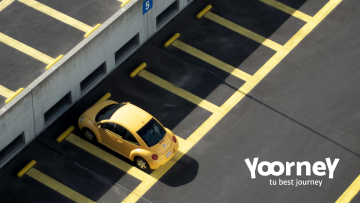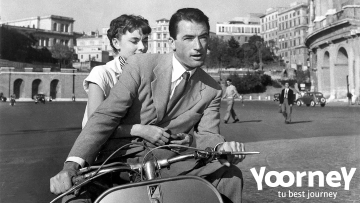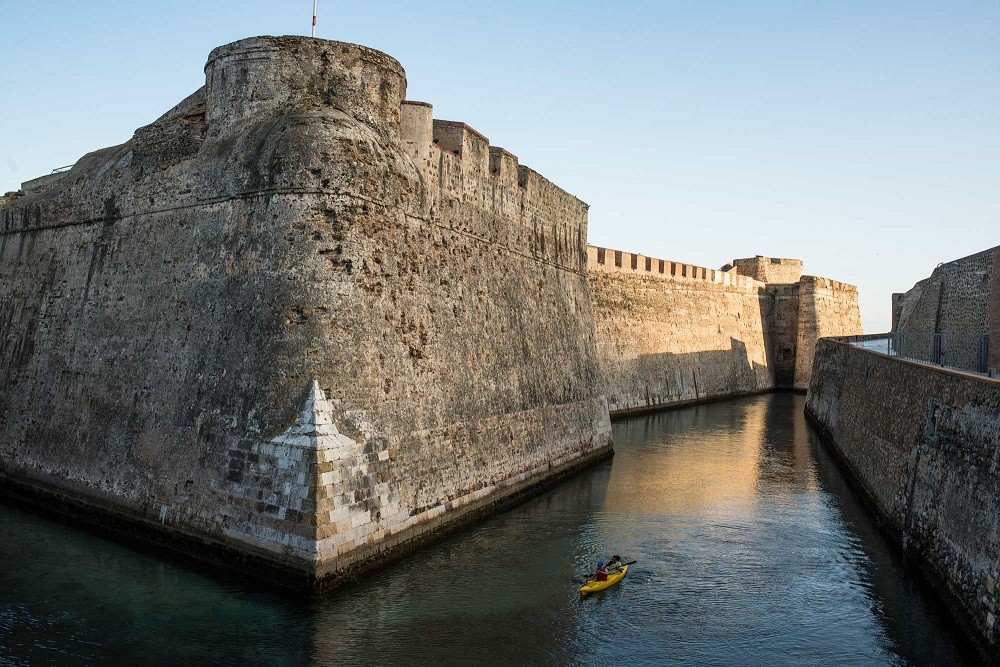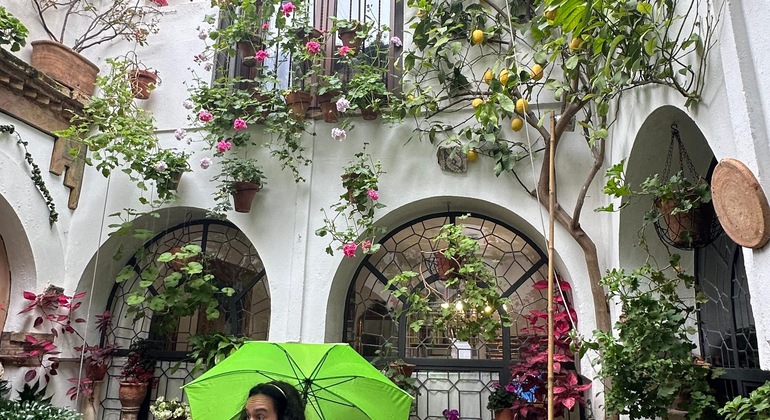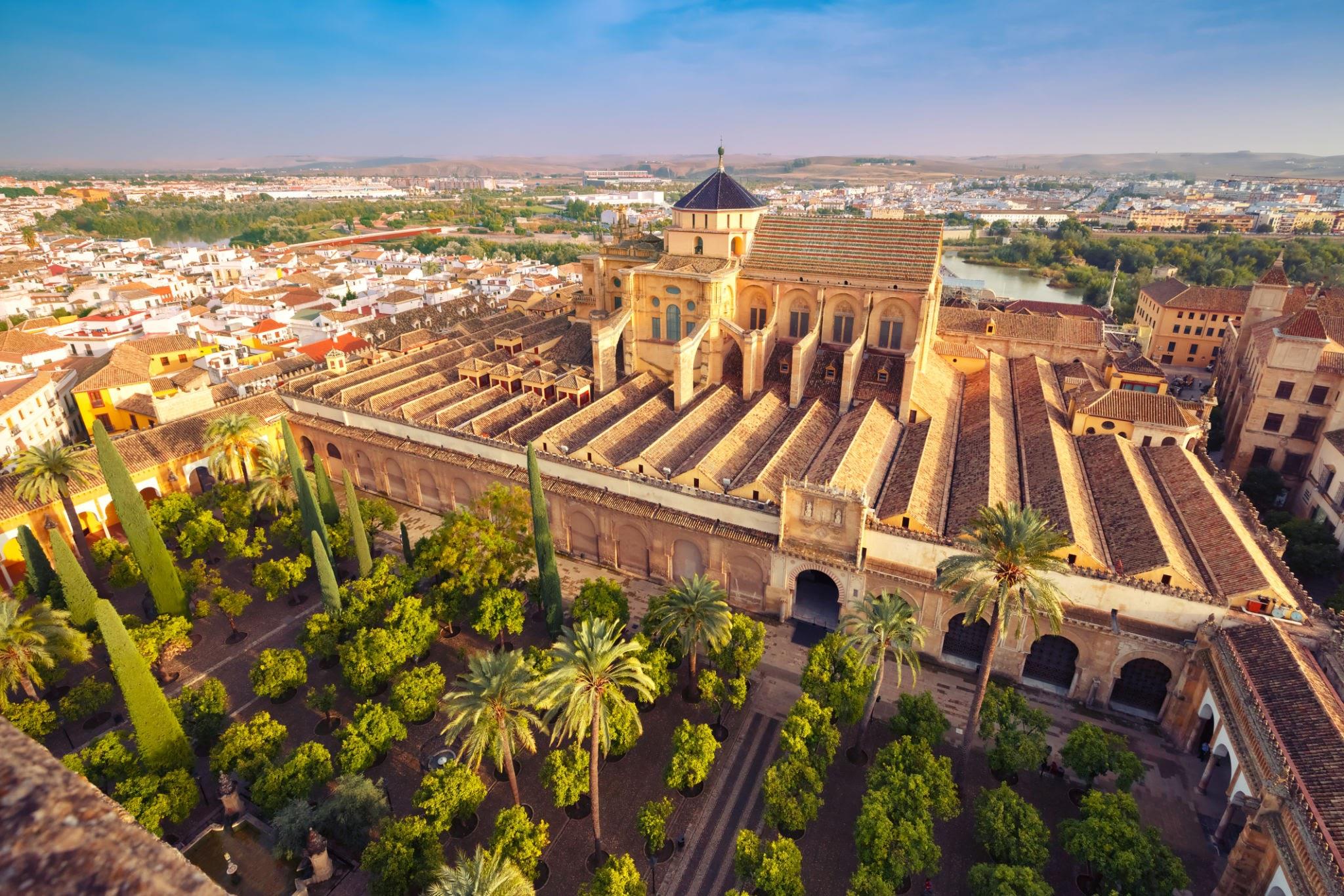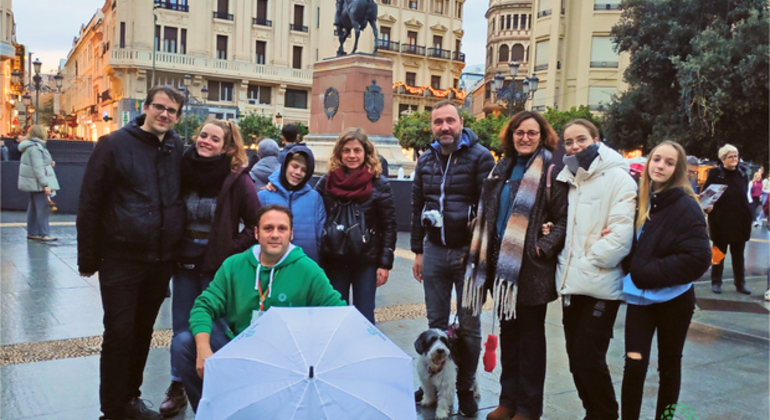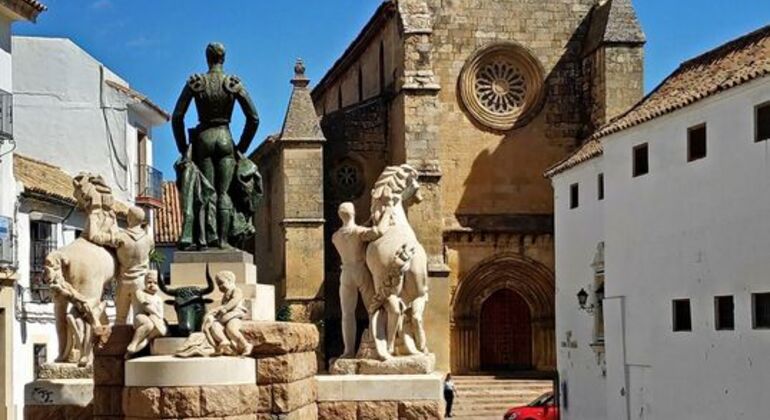1 - 3 days in Córdoba: The best things to do and visit.

Córdoba, also known as La Sultana, is a city that truly captivates those who visit it due to its millenary history, its impressive cultural and patrimonial heritage and its delicious cuisine. It is one of the great jewels of Andalusia and a perfect destination to get to know the legacy of four great cultures. Córdoba was the capital of one of the great states of the Middle Ages, the Caliphate of Córdoba, ruled by the Umayyad dynasty. It is the only city in the world that has the great privilege of having four UNESCO World Heritage Sites and has the largest historic city center of the whole Iberian Peninsula.
How to plan my visit to Córdoba?
At Yoorney we have local tour guides who offer you the best selection of guided tours, free tours and excursions in Córdoba and in other cities around the world. A different and fun way to discover a city. The biggest challenge when travelling is how to really get to know everything you want about the chosen destination. We take care of that and show you each spot in a way that makes you feel not just like another simple tourist. When you take a tour with Yoorney you will dive into the local culture and experience the city as if you were a local.
Hey Yoorner! In the mood for adventures? Visit the city in a different way with our Free Tour of Córdoba!
Why visit Córdoba?
If you’re planning to go to the city of Córdoba, you probably want to know which are the essential places to visit and the best things to do there. The millennial history of this city is impressive: In times of the Roman Empire, it was the capital of the Roman province Hispania Baetica and became the heart of its oil industry and every culture that settled there did so for the agricultural richness of its soils and its geostrategic position.
It is surrounded by spectacular landscapes: A breathtaking combination of plains and small mountain chains such as the famous Sierra de Cardeña y Montoro Natural Park or the Sierras Subbéticas Natural Park. Within the province of Córdoba there are also other tourist destinations that attract the attention of travelers, such as the Castillo de Almodóvar or the Torreparedones Archaeological Park. These are the essential places to see and visit in Córdoba in 3 days (or on a weekend getaway). Take note!
Córdoba: Top 13 things to do and must-see attractions

1. Corredera Square
The Plaza de la Corredera is one of the key spots of the city and actually, its first name was Plaza Grande de Córdoba (Grand Square of Córdoba)! It follows the style of the traditional Castilian Plaza Mayor from the seventeenth century and has been the setting of a great number of autos-da-fé, executions, royal and diplomatic receptions and bullfights throughout its history.
This is not only the link between the urban and the traditional face of Córdoba, but also its pulsing heart of leisure and entertainment, where you can breathe the free and easy atmosphere on its terraces and enjoy the most important and fun events of the city. You can also find the Mercado de la Corredera here, where you can buy fresh and regional products.
2. Archaeological Museum of Cordoba
Visiting the Archaeological Museum of Córdoba is to discover a part of the legacy of the city through each piece that you can find there. It is located in the Plaza de Jerónimo Páez, a medium-sized square with a very special charm. In 15 BC, the Roman Theater of Córdoba was built here and is today sheltered inside the museum.
It is the second museum in Spain with the most archaeological collections.
PRICES
UE Countries: free
Other: 1,50€
SCHEDULE
Tuesday to saturday 9:00 to 18:00. Monday close. Sunday 9:00 to 15:00.
3. Mosque-Cathedral of Córdoba

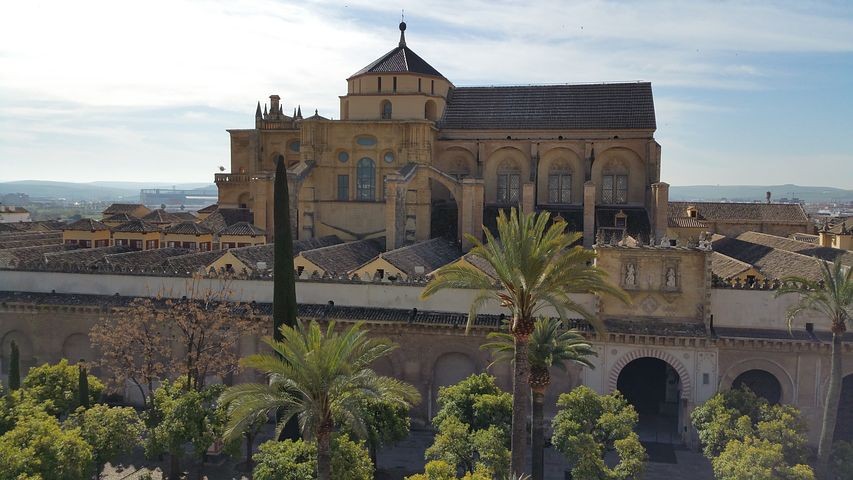
This is one of the obligatory stops in Córdoba. When walking towards it, the first thing that will take your breath is the majesty of this monument that marks the central axis of the Historic Center, old Al-Medina Qurtuba.
During the Andalusi period, it was the Great Mosque (Aljama Mosque) of the city. It was even the second largest Mosque in the world, after Mecca. This two-hectare building has more than 1200 years of history and worship: Having been a place of Christian worship since the Christian reconquest of Córdoba in 1236 by King Fernando III el Santo, it is still today the main temple of Córdoba and was declared a UNESCO World Heritage Site in 1984.
What to see and do in the Mosque-Cathedral of Cordoba?
This unique building was erected on the very same place where a Roman temple and, in the Visigothic period, the Paleo-Christian Basilica of San Vicente were located. In the 8th century, it was converted into the Aljama Mosque (Greater Mosque), where the faithful had to go to pray on Fridays. The construction works began in 785 AD under the rule of the Umayyad dynasty and throughout its history, the building underwent three interior and two exterior extensions.
In summary, what you can see today is the living testimony of the importance that Córdoba had during the Umayyad period. In its interior, you will find the Cathedral of Córdoba, consecrated to the Assumption of Our Lady.
Architecture and interior of the Mosque-Cathedral of Cordoba
One of the main entrances to the Patio de Los Naranjos, through which you enter the interior of the Mosque-Cathedral, is the Door of Forgiveness from the 14th century, one of the most impressive entries of the building. It is an open-plan complex, where you can walk through a forest of marble columns and arches, which is achieved through the different extensions that the Mosque has undergone throughout its history. The first or ‘primitive’ Mosque began to be built in 785 AD by order of Emir Abderramán I.
The first expansion was undertaken by Abderramán II in 833. The first Caliph Abderramán III expanded the Patio de los Naranjos, demolished the minaret built by Hixam I and erected a new one that was to be 47 meters high and which would serve as an example of Caliphate art. Al-Hhakam II, the second caliph, expanded the temple again in 961, this time towards the Qibla wall in the southeast, where he placed the mirab, which is the most richly decorated part of the Mosque. And finally, during the reign of Caliph Hixam II, Almanzor expanded the building towards the west in 972, including the patio.
After the Christian reconquest of Córdoba, the Mosque began to be a place of Christian worship. In 1371 the Royal Chapel, founded by King Henry II of Castile, was completed. In 1517 the Chapel of the Sagrario was built by Hernán Ruiz I, located where the chapter library had been and occupying part of the Almanzor extension. As early as in the 16th century, Emperor Charles V ordered the construction of the Cathedral, and the works began in 1523. Its structure is a Latin cross plan, with a Renaissance dome, Gothic vaults, various chapels that extend from the Plateresque to the barracks. The baroque choir is from the 18th century and made of mahogany wood imported from the Caribbeans.
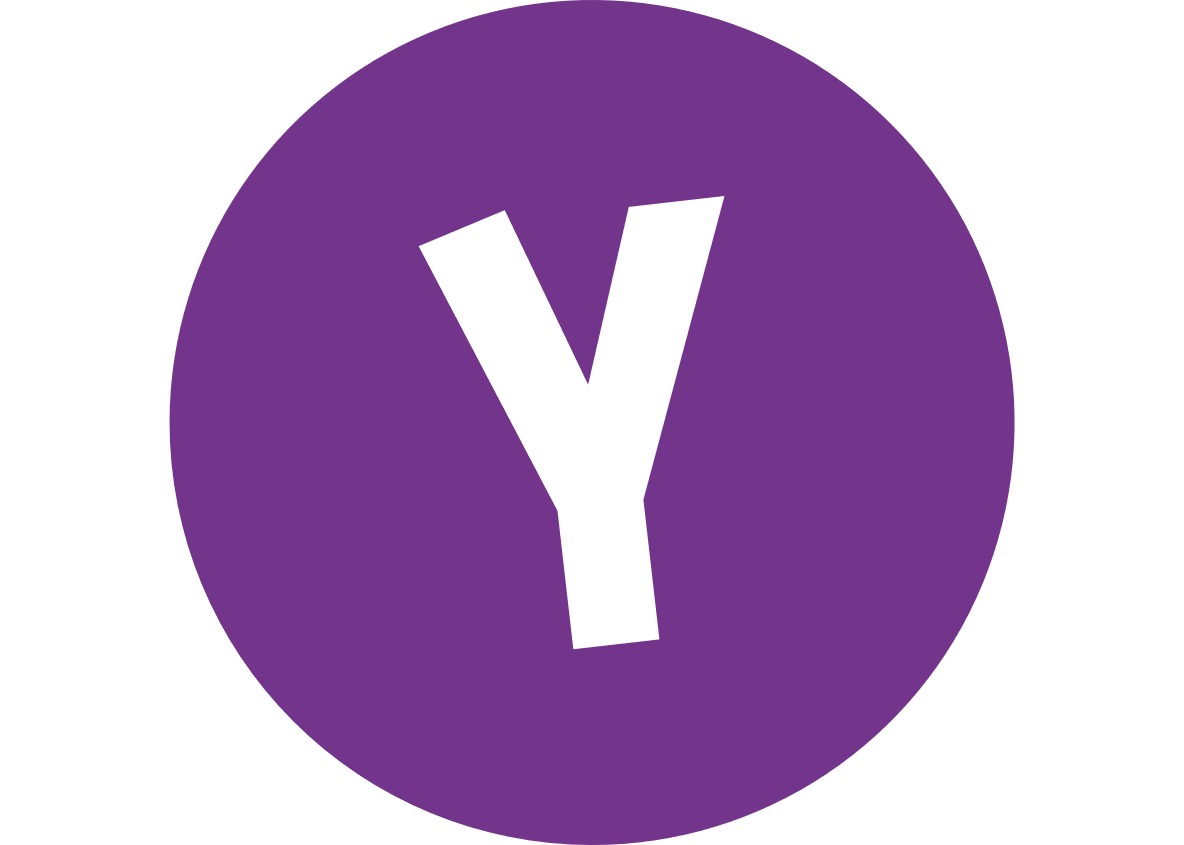 Yoorney Tips! Mosque Tour. Learn about the curiosities of the place with a local guide in English. In addition, it will solve all the doubts you have.
Yoorney Tips! Mosque Tour. Learn about the curiosities of the place with a local guide in English. In addition, it will solve all the doubts you have.
PRICES
11 € adults
Reduced 9 €: People over 65, students from 15 to 26 years old and holders
of the Youth Card.
Reduced 6 €: Children from 10 to 14 years old, people with functional diversity up to 64%
and members of large family (adults)
Reduced 4 €: Large family members (children from 10 to 14 years old)
Free: Born and / or resident in the dioceses of Córdoba, under 10 years old,
holders of the "Andalucía Junta 65" card and people with functional diversity
of more than 64% with a companion.
(Includes entrance to the Route of the Fernandine Churches)
SCHEDULE
From March to October from Monday to Saturday from 10 a.m. to 7 p.m. Sundays and holidays of
8:30 a.m. to 11:30 a.m. and from 3:00 p.m. to 7:00 p.m.
Tuesday to Friday from 11 am to 1 pm; Monday to Sunday from 6:00 p.m. to 8:00 p.m.
From November to February, the monument closes for visits at 6 p.m.
4. Provincial Museum of Fine Arts and Julio Romero de Torres Museum.

The Provincial Museum of Fine Arts of Córdoba and the Julio Romero de Torres Museum are located in one of the most iconic places in the city, the Plaza del Potro.
They are located in what was once the old Charity Hospital, created by the Catholic Monarchs in the 15th century to attend helpless and destitute persons and directed by the Third Order of San Francisco. The hospital maintained this function until 1837 and underwent numerous transformations from the middle of the XIX onwards until it came to house the Archaeological Museum from 1868 through 1917.
The origin of this museum is in the ecclesiastical confiscations of Mendizábal in 1835, where commissions were created that were in charge of safeguarding and managing the patrimonial heritage. This institution was officially created on October 25, 1843, and occupied most of the old hospital. Throughout history, it has gathered an impressive collection that was obtained through various donations: We can find Mannerist, Baroque or 19th and 20th century art there.
One of the curators of the Museum of Fine Arts was Rafael Romero Barros, who married Rosario de Torres Delgado, leading to the creation of the family Romero Torres. They actually lived in one of the rooms of the original building, at the rear of the property, where the famous Cordoba painter Julio Romero de Torres was born. Years later, he would not only live there with his wife and children, but he also had his studio there until his death on June 10, 1930.
After his departure, his widow and children decided to bequeath his artwork to the city of Cordoba, and that what had been their home should house this museum and thus, his legacy. The Julio Romero de Torres Museum was inaugurated on November 23, 1931. Here, you can find such iconic works as La Chiquita Piconera.
- Provincial Museum of Fine Arts
UE countries: free
Other: 1,50€
- Julio Romero de Torres Museum
Ticket: 4,50€
Students to 26 years old: 2,25€
Children under 13 and over 65: Free Menores de 13 años y mayores de 65 años: Gratuita
SCHEDULE
- Provincial Museum of Fine Arts
From June 16 to September 30, Tuesday to Sunday and holidays from 9:00 a.m. to 3:00 p.m. Monday closed except the eve of holidays
From October 1 to December 31, Tuesday to Saturday from 9:00 a.m. to 9:00 p.m., Sundays and holidays from 9:00 a.m. to 3:00 p.m. Closed on Monday, except the eve of holidays.
Open all holidays including local ones.
- Julio Romero de Torres Museum
From June 16 to September 5, Tuesday to Saturday from 8:30 a.m. to 3:00 p.m. Sundays and holidays from 8:30 a.m. to 2:30 p.m. Closed Monday
From September 16 to June 15, Tuesday to Friday from 8:30 a.m. to 8:45 p.m. Saturdays from 8:30 a.m. to 4:30 p.m. Sundays and holidays 8:30 a.m. to 2:30 p.m.
5. Madinat-Al Zhara
Madinat-Al Zhara is a unique archaeological site in Spain, and the only one that shows the splendor of a city founded ex novo in the Caliphal Period of Córdoba. It is a place that illustrates the cultural and economic wealth of that period, and where you can perfectly contemplate caliphate art. Located 8 km from Córdoba, where the mountains merge into the Guadalquivir valley, this is a privileged place for its landscapes and for its strategic position.
This former city was founded between 936 and 940 by the first Caliph Abderramán III and comprised a total of 120 hectares, home to 12,000 inhabitants. It was the seat of the administrative and diplomatic bodies of the Umayyad Caliphate and Caliph Abderramán III and his son Alhakem IIresided here. The city was abandoned in 976 and uninhabited from then on. As with any other archaeological site, you can only get the most out of your visit if everything is explained properly to you. We took
Free Tour Medina Azahara and it was wonderful to travel through time with the guide.
Accredited EU cities: free
Other countries: 1.50€
Shuttle bus to access the site
Adults: 2.50€ (includes round trip)
Children from 5 to 12 years old, retirees +65 years old, people with functional diversity: 1.50€
Children from 4 to 0 years old: Free Ciudades de UE acreditados: gratuito
SCHEDULE
From October 1 to December 31
Tuesday to Sunday and holidays from 9:00 a.m. to 3:00 p.m. Closed Monday
(except the eve of holidays)
Open holidays: October 24, November 1, December 6 and 8.
Closed: December 24, 25 and 31 and January 1 and 6.
From June 24 to September 30
Tuesday to Sunday and holidays from 9:00 a.m. to 3:00 p.m.
Night Visits (from July 1 to September 30),
Tuesday to Saturday from 8:00 p.m. to 12:00 a.m.
Only the deposit is open. Closed Monday
(except the eve of holidays, with holiday hours).
Holidays and open Mondays: August 15, September 7 and 8
6. Alcázar of the Christian Monarchs

The Alcázar of the Christian Monarchs is one of the buildings in Córdoba which prides itself on having more than 2000 years of history and which was honored by the presence of important historical figures like Julius Caesar, Abderramán III, Isabel I or Christopher Columbus.
In the Roman period the customs of the river port, the governor's palace and the quaestor's palace were located here. During the Emirate of Córdoba, the Omeya or Andalusi Alcazar was built, which was the residence of emirs and caliphs. It lost relevance after the construction and transfer of part of the court to Madinat-Al Zhara. When the Caliphate fell, it became once again the royal residence, although there is evidence of the construction of the citadel during the Almohad period.
The fortress that we see today is a consequence of the modifications that were conducted after the Christian reconquest of the city. King Fernando III of Castille ‘the Saint’ (el Santo), distributed the original building among nobles, the Order of Calatrava and Bishop Lope de Fitero, for them to build, among others, the Episcopal Palace of Córdoba. King Alfonso X ‘the Wise’ began to carry out the first constructions on these Andalusian remains, such as the Tower of the Lions and part of the wall canvas.
However, the greatest part of the constructions were undertaken from 1328 onwards under the reign of Alfonso XI, who created a quadrangular space and even built Mudejar-style bathrooms for his lover Doña Leonor de Guzmán. From that moment on, this was the official residence of the Christians kings.
The Catholic Monarchs were the last monarchs to live in the Alcázar, where they spent more than eight years and from where they led their campaign against the Nasrid Kingdom of Granada. After the reconquest of Granada, the Catholic Monarchs ceded the Alcázar to the Holy Office of the Inquisition where the latter placed the Tribunal, and the building lost its palatial character.
The Inquisition carried out various modifications to adapt the building to its new usage, specifically the creation of cells for the prisoners and the construction of the Inquisition chapel in the 18th century. After the abolition of the Inquisition, the Alcázar became a municipal jail where hundreds of republicans were held prisoners during the Spanish Civil War, and later became a seat of military administration.
You should not miss walking through the delightful gardens of the Alcázar, such as the Patio Morisco or the Patio de las Damas. We recommend you to take a guided tour, in order to not miss any detail
Alcazar of the Christian Monarchs Tour.
General: 4.50€
Students up to 26 years old: 2.25€
Under 13, over 65: Free
Tuesday to Friday (except holidays): Free from 8:30 to 9:30
Tuesday to Friday: 8:15 a.m. to 8:00 p.m.
Saturdays: 9:30 a.m. to 6:00 p.m.
Sundays: 8:15 a.m. to 2:45 p.m.
Closed Monday
The last access to the monument will be half an hour before closing.
The eviction will take place five minutes before closing.
7. Jewish Quarter and Synagogue
The Jews probably arrived in Córdoba after the Roman foundation in 169 BC. They were a key player in the Muslim conquest of the territory, since they had been persecuted during the Visigothic period. During his reign, Caliph Abderramán III had a Jew at his side: Hasday Ibn Shaprut, his doctor, trusted man and minister of finance, representing a community that was becoming continuously larger and more powerful.
After the death of Alhakem II, the decline of the Umayyad Caliphate began and the first hostilities about the control of power came up, such as the Berber Suleiman, who entered the city and plundered it, especially the Jewish quarter, demolishing businesses and homes. This caused hundreds of families to find themselves in misery, having to go into exile. After this sad event, the Jewish community was reduced and they had to face the Almoravid Caliphate that imposed the Islam religion, and these impositions would become even more radical under the Almohad Calpiphate in the 12th century.
At that exact moment, Moshé ben Maimon, known as Maimonides was born in Córdoba, a philosopher and doctor, and one of the most influential men in history. You can find a statue depicting him in the very heart of the Jewish quarter in the Plaza de Tiberíades. According to a Cordovan tradition you must touch his left foot if you want to return to the city.
The Christian reconquest in 1236 marked the beginning of a period of tolerance: The Jews repopulated the old Jewish quarter and were allowed to build the Mudejar style Synagogue in 1315. It was in use until 1391, when the Jewish quarter was attacked and it was ordered that everyone who lived in Córdoba either had to convert to Christianity or would have to leave the city.
In 1492, the Catholic Monarchs ordered the Decree of Expulsion of Jews from Spain and the Synagogue came to serve different purposes, including as the hermitage of San Crispín (patron saint of shoemakers) and it even became a nursery school in the twentieth century.
In the Jewish Quarter you can find the House of Sepharad, a building that still preserves its structure from the 14th century, converted into a museum that preserves and promotes the memory of the Hispanic Jewsh and where you can find unique objects that will let you travel in time and culture.
The Jewish Quarter of Córdoba is accessed through the Puerta de Almodovar and is part of the Sephardic Routes through the Network of Jewish Quarters in Spain, indicated by a plaque in its streets where you can also find maps of these cultural routes.
Synagogue
EU citizens: Free
Other: 0.30€
From October 1 to June 30
Tuesday to Saturday: 9:00 a.m. to 9:00 p.m.
Sundays and holidays: 9:00 a.m. to 3:00 p.m.
Monday closed (except holidays)
From July 1 to September 30
Tuesday to Sunday and holidays: 9:00 a.m. to 3:00 p.m.
Closed Monday.
Last show 10 minutes before closing.
8. Viana Palace
The origin and history of the manor houses that make up the current Palace of Viana date back to the end of the Middle Ages and are linked to the lordship of Fuencubierta. Ruy Fernández of Córdoba, son of Ruy Fernández ‘el Viejo’ (‘the Old’) and Mayor Martínez de Argotewould was its first lord by maternal concession.
The lordships of Belmonte and Villaseca were also to come into possession of this family line. His grandson Fernando Alonso Fernández de Córdoba bought the lordship of Belmonte from the Lord of Aguilar on January 25, 1462. On the other hand, Ruy Fernández de Córdoba, mayor of Antequera, married Teresa Suárez de Figueroa (daughter of Gómez Suárez de Figueroa Moscoso and Beatriz Sánchez de Melo), and started the purchase of the houses that became the main ones of the lordship of Córdoba and Figueroa.
The Palace of Viana is considered the Patio Museum. It occupies an area of about 5,600 m2, and approximately half of it corresponds to outdoor spaces: its garden and its 12 patios. It is estimated that the palace was modelled on the infrastructure of a Roman island composed of two domus. Both the archaeological remains that have been found around the garden and the soil seepage, due to which the vegetation needs to be watered frequently, suggest the existence of ruins in this very spot.
We recommend you to take the impressive
Tour Palacio de Viana, Palace Tour that will allow you to discover every single corner of these beautiful spaces.
Combined visit: 10€
Visit collection of patios: 6€
Visit the palace and its collections: 6€
Wednesdays from 2:00 p.m. to 5:00 p.m.
From September 1
Tuesday to Saturday: 10:00 a.m. to 7:00 p.m.
Sunday: 10:00 a.m. to 3:00 p.m.
Closed Monday.
July and August
Tuesday to Sunday: 9:00 a.m. to 3:00 p.m.
Closed Monday.
9. Plaza del Potro

Originally, the Plaza del Potro (Square of the Colt) had a perfectly square shape and was completely surrounded by buildings. In the 15th century, after the foundation of the Charity Hospital and other modifications throughout its history, it ended up with the rectangular and open shape that it still has today.
From the 15th century onwards, the area where it is located began to be known as El Potro (the Colt), Calle del Potro (Potro Street), Plaza del Potro (Potro Square) as it was an important transit point to one of the main entrances to the city, Puerta de Baeza. This promoted the appearance of inns for travelers to seek lodging, food and drink and resulted in a large influx of pack animals that led people to name this place “el Potro” (the Colt). One hundred years later, in the 16th century, the fountain that we find there today, and whose main decorative figure is a colt, was built.
This famous spot of the city was even mentioned by Miguel de Cervantes in the second part of Don Quixote and will let you breathe the picaresque Spain of the Golden Age when you visit it. Actually, it was not recommended to visit this area of Córoba at night, because although it was a business area in the morning, it was also located nearby the old brothel of the city.
In this square you can also find La Posada del Potro, which was originally a brothel and was converted into an inn in the 16th century, until it became a courtyard house for the neighbors of this area in the 1970s. The building is still in perfect conditions with its old Castilian courtyard that reminds us of the old open air courtyard theatres, such as the one in Almagro.
It currently houses the Fosforito Flamenco Center, a place where you can learn about the origins of flamenco and experience it yourself, since it offers you the opportunity of playing the flamenco cajon. The best thing is that in certain times of the year you can even enjoy totally free flamenco shows here.
Posada del Potro
Free
From September 16 to June 15
Tuesday to Friday: 8:30 a.m. to 8:45 p.m.
Saturday: 8:30 a.m. to 4:30 p.m.
Sundays and holidays: 8:30 a.m. to 2:30 p.m.
Closed Monday.
From June 16 to September 15
Tuesday to Saturday: 8:30 a.m. to 2:30 p.m.
Sundays and holidays: 8:30 a.m. to 2:30 p.m.
Closed Monday.
10. Calleja de las Flores

The Calleja de las Flores (Flower Lane) is located in the middle of the Historic Center of Córdoba and is the most visited and photographed one in the city. Not only has it been a World Heritage Site since 1994, but it was also declared the most beautiful street in Spain by the magazine Tendencias.
What we perceive today as a combination of a lane and a square was originally an old neighborhood courtyard. In the 20th century, in the course of the projects to beautify the city, the mayor Antonio Cruz-Conde was in charge of making changes in this area. Today, it is an iconic symbol of the city, and one of those corners where you can relax and let yourself be carried away while observing the glow of the water in its fountain. And of course you shouldn’t forget to take a souvenir photo surrounded by this unique lane with its indigo blue pots and with the Bell Tower of the Mosque-Cathedral in the background. We recommend you to see the Calleja de las Flores both during the day and at night, as they are two sides of the same coin and it spreads a truly idyllic atmosphere at night.
11. Calleja del Pañuelo

The origin of the name of the Calleja del Pañuelo (Handkerchief Lane) is attributed to the fact that as you walk along the alley, it becomes increasingly narrow until the diminutive width of only 50 cm, which is the size of a handkerchief. Legend says that in times of the Caliphate a silk merchant, famous for having the best fabrics in the entire city lived in this little square of 15 square meters. Only the elites could afford them easily, while the modest people had to do savings for a long time, and when they thought they had enough and went to buy silk there, they were told that with the little money they had the most they could buy was a tiny piece of cloth, as small as a handkerchief. In order to verify the size of their purchase, they were told to compare it to the narrowest part of the lane.
¡Don’t forget to bring a handkerchief when you come to Córdoba to verify its size!
12. The Patios of Córdoba


This is one of the four World Heritage Sites of the city, specifically an Intangible Cultural Heritage since 2012. Its moment of maximum splendor is during the Córdoba Patios Festival and Patios Contest which begins on the first Monday in May. During two weeks, Cordovans living in the traditional neighbourhoods of the city open the gates of their courtyards and invite you to visit more than 60 beautifully decorated traditional patios. On the same occasion, the Balconies and Window Grilles Contest is held, so that numerous balconies and window grilles are covered with an overwhelming flowerage.
If you visit Córdoba outside the festival season you can still visit some patios and learn about their history in the Alcázar Viejo Neighborhood, popularly known as San Basilio Neighborhood. You will find out that they are much more than courtyards with plants: They are the heart of Córdoba.
In 2021 they celebrate their first centenary!
13. Tendillas Square.
The Plaza de Tendillas, or Tendillas Square, is the nerve center of Córdoba, its main shopping area and one of the most important leisure and meeting spots. In the fourteenth century, the Houses of the Order of Calatrava (Convent of the Commanders of the Order of Calatrava) and some shops (‘tiendas’ in Spanish) were located here, which led to the name of the Tendillas de Calatrava that flourished during the seventeenth and eighteenth centuries. When the convent was demolished, the Fonda Suiza (‘Swiss Inn’) was built, which by 1910 became the Hotel and Café Suizo, the main meeting point in the city.
The first projects about creating a square here, in the most central spot of the city, can be found in a decree of December 1895, but were abandoned for economic reasons. It did not come up again until 1902, when the project was finally carried out by the architect Patricio de Bolomburu. As early as in 1908 the current Plaza de las Tendillas began to gain its form, and was called at that time Plaza de Cánovas del Castillo, expanding from east to west. Finally, the Hotel Suizo was demolished in 1923 and the square was completely renovated by the architect Félix Hernández. From this moment on, the buildings that surround the square were erected and little by little, this spot was consolidated as the central point of reference in the city and as a "tontódromo", an area where the young people went to walk around to see and be seen, and to promenade during courtship.
In the postwar period, the fountain of the square was created, and some areas were renovated. In the 60s the old square clock was replaced by a new one that chimes in the ‘solea’ rhythm of a flamenco guitar. After some time, an equestrian sculpture depicting Gonzalo Fernández of Córdoba “The Grand Captain” was added to the fountain.
The latest remodelings of the Tendillas Square were realized in 1999, when traffic was eliminated and it was converted into an open space pedestrian square decorated with some beautiful flower beds.
The Tendillas Square is also where Cordovans celebrate sporting triumphs and welcome the New Year, since December 31 is the only day of the year that the clock chimes after ten o'clock in the evening.
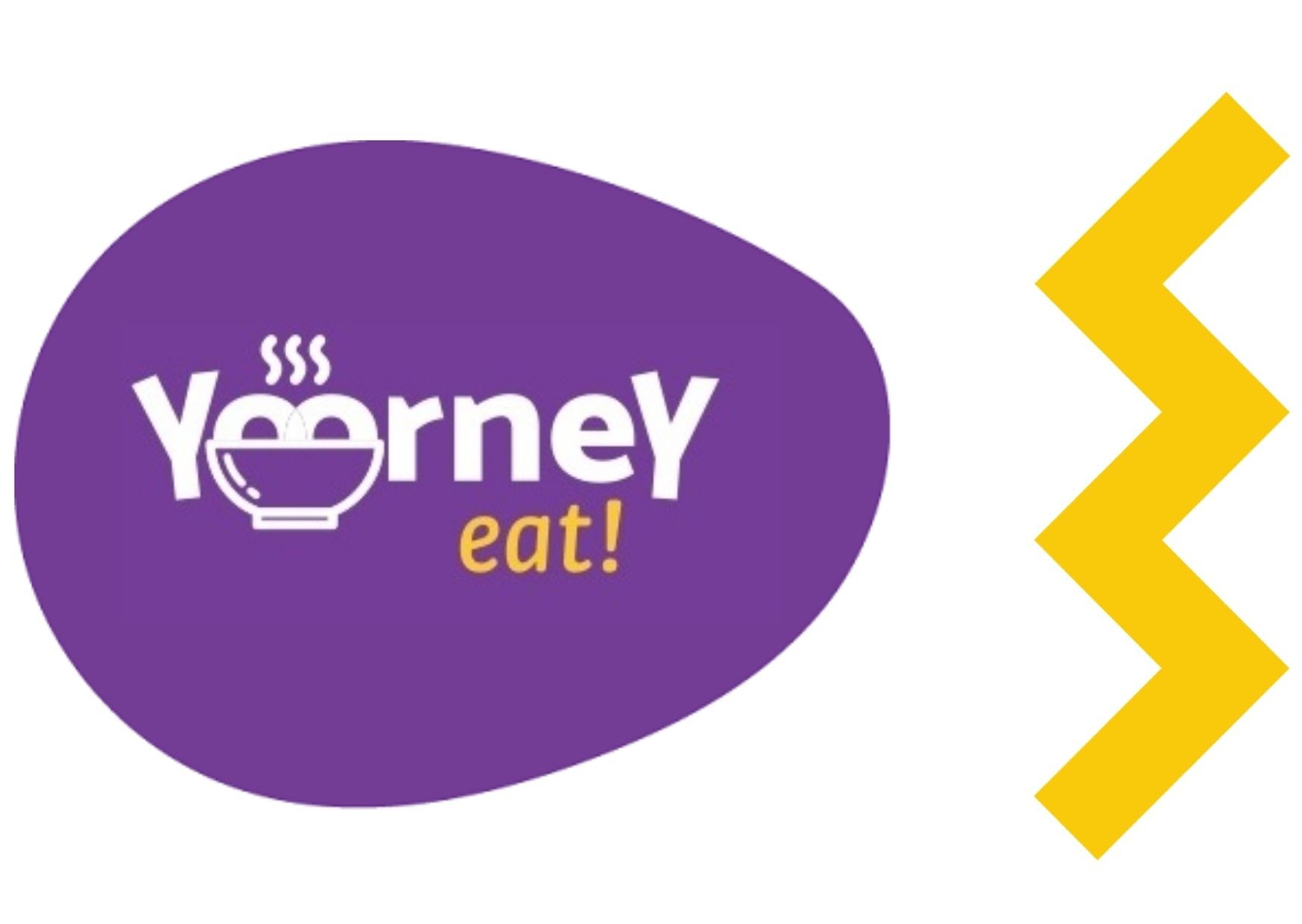 Where to eat in Córdoba?
Where to eat in Córdoba?
As in all places in Andalusia, the gastronomy of Córdoba is spectacular. Some of the most renowned high quality products of this province are virgin olive oil, DO Montilla-Moriles wines, DO Valle de Los Pedroches sausages, and cheeses from Zuheros. Here are the most famous dishes of Córdoba and some of the awesome places where you can taste the typical local food.
9 places to eat in Cordoba
-
- Taberna Sociedad de Plateros San Francisco: The oldest tavern in Córdoba that preserves all its original charm. We loved the eggplants with honey. You should also try their marinated pomfret and their vino fino (‘fine wine’), they are super special!
- Moriles Ribera: An extensive menu in a very popular spot in Córdoba. You must taste the barbecue meat and in any case should leave some room for a dessert, in order to eat the ‘Arch of the Mosque’, it’s spectacular! This restaurant has a privileged location just next to the river banks.
- Patio Romano: Located in the heart of the Old Town, on Deanes street. You have to try the spectacular oxtail croquettes and the Pedroches Valley beef steak, it will make your mouth water! And you should definitely have a glass of Algariabía white wine from the Cooperative La Unión.
- Taberna Nº10: During spring and summer, you can enjoy a magical atmosphere, the fresh breeze and great food and drinks on their rooftop terrace, with views of the mosque. Here you can try two typical dishes of Córdoba: the mazamorra (a chilled soup) and the flamenquín (a deep fried meat, ham and cheese roll).
- Casa Pepe de la Judería: One of the most traditional restaurants of the city, located in the historic center. Here you should order the oxtail and the salmorejo, one of their specialties. They also have a rooftop terrace.
- Casa Taberna Santos: This is an obligatory stop, at least to have a snack when you’re in the city. If you don't go to Santos to have a piece of tortilla with a beer, you have not been to Córdoba.
- Taberna de la Corredera: This tavern is located in the Corredera Square, and here you can find deep fried squid as our grandmothers used to prepare it, tasty and golden.
- El Patri: Another emblematic spot in the Corredera square. Here you can order a tasting platter that contains various typical tapas of the city.
- Mercado de La Victoria: Old food market on Paseo de La Victoria, converted into a gastronomic market where you can find different food stalls, from La Salmoroteca that offers different types of salmorejo to a COVAP stall, where you can taste Iberian ham.
9 typical dishes of Cordoba
- Oxtail stew: This exquisite typical Cordovan stew has its origins in the 16th century, when it used to be prepared with the tails of the fighting bulls after the bullfight. It was the only part of beef that modest people could afford.
- Flamenquín: The flamenquín is a breaded deep fried meat roll filled with ham and sometimes also with cheese. It is not clearly known where its name comes from, but legend says that it was due to the mostly blond Flemish people who came to the region with Emperor Charles V. Due to its batter, the flamenquin has a golden color. Originally, it was made with fine veal escalope, stuffed with serrano ham and battered in egg and breadcrumbs. With the passage of time, the veal was replaced by pork fillet.
- Salmorejo: This dish has its origins in the word “aliño” (“seasoning”), which was a sauce made of water, vinegar, salt and oil, used to season rabbit meat. Originally, there wasn’t any tomato in the “aliño”, since this vegetable is from Latin America and was only incorporated into our gastronomy in the 18th century. The salmorejo is composed of pear tomatoes, bread (the traditional Cordovan "telera” bread), garlic (ideally from Montalbán), virgin olive oil and salt. This soup is served chilled, decorated with a splash of olive oil and some small pieces of ham and hard-boiled egg. It’s a true delicacy of the Gods!
- Mazamorra: This is another one of the typical dishes from Córdoba, and it is often labelled as the "pre-salmorejo". It is made with bread, raw almonds, vinegar, garlic and salt and accompanied with a splash of olive oil, and some pieces of salted fish, for example cod and chopped almonds. As this soup is served chilled, it is perfect to stimulate your appetite. Legend says that its origins go back to a paste made with bread, oil, salt and garlic from the times when Córdoba was the capital of the Roman province Baetica.
- Zuheros cheese: Cheese lovers cannot leave Córdoba without trying the cheese from Zuheros (a mountain village in the province of Córdoba, where you can find a wide range of cheese, mostly made of goat milk. We love the goat cheese in olive oil and the goat cheese with ash. They are spectacular!
- Eggplants with honey: Eggplants cut into sticks or slices, covered with a flour batter and deep fried in olive oil. They are accompanied by cane honey, either put directly on top or served in a bowl so that you can dip them yourself.
- Ham from the Pedroches Valley: One of the most notorious delicacies of Cordovan gastronomy. Order a plate of Iberian ham from the Pedroches Valley and you will be ready to continue your tour around Córdoba! We recommend you to have a platter of Iberian products (chorizo, loin and salchichón) and some pure sheep cheese DO Pedroches Valley as a starter, you will love it!
- Cordovan cake: This is a traditional Cordovan sweet, it has a round shape and is made with puff pastry stuffed with “angel hair”, a transparent threaded jam made from Siam pumpkin pulp and white sugar. On the outside it is sprinkled with sugar and cinnamon. We recommend you to accompany it with a glass of Pedro Ximenez sweet wine in order to enjoy your dessert to the fullest.
- Montilla-Moriles Wines (Denomination of Origin): If you come to Córdoba you cannot leave without tasting its wines, which correspond to one of the oldest denominations of origin in Spain. There is an immense range of wines, all of them coming from white grapes: the most famous ones are the Vino Fino and Pedro Ximenez, a sweet wine. Some other typical types of wine from the region are the Amontillado, Oloroso, Tinaja and Afrutado (“fruity”).
 Córdoba with children
Córdoba with children
Are you going to travel to Cordoba with the little ones? It has everything it needs to be fully enjoyed by the whole family! From discovering the world of an alchemist to doing outdoor activities in Children’s City, the biggest children’s playground area in the city. We assure you that both you and your kids will have loads of fun spending your holidays in Córdoba!
Take a look at the best plans for adults and children in the province of Córdoba. Are you in?
Alchemy Museum
A small museum where you will learn details about alchemy, a pseudo-scientific discipline that combines various branches of knowledge. Discover the mysteries of minerals and natural elements and the origins of our existence from a fun and dynamic perspective.  The little ones (and the grown-ups) will love entering an unknown world. You will be able to see how the fire originates, play to discover it!
The little ones (and the grown-ups) will love entering an unknown world. You will be able to see how the fire originates, play to discover it!
Andalusian Horse Equestrian Show in the Royal Stables
If you like animals, and specifically horses, this combination of dressage and flamenco dance is definitely a show worth seeing. It takes place at night, the perfect time to relax a bit with your little ones while enjoying a unique and breathtaking exhibition.
Children’s City
It is located on Avenida Menéndez Pidal, nearby the zoo and the Botanical Garden. Children’s City is a fenced and guarded playground and park area, where instructors guide you and your kids through the manifold play areas for boys and girls of all ages. There are also picnic areas where you can take a break while having a nice outdoor lunch.
 The ticket includes entry and use and enjoyment of the facilities. Check schedules and rates
The ticket includes entry and use and enjoyment of the facilities. Check schedules and rates
Legends and Mysteries of Córdoba
If you go to Córdoba with children, you should seize the opportunity and dive into the most legendary and mysterious part of the city, with stories that are suitable for all audiences. Both kids and grown-ups will enjoy a terrifying and terrific family night on the Legends and Mysteries Free Tour.
Castle of Almodóvar del Río
A castle from the 8th century in which you can find all the differential details of this type of construction. Your kids will love to discover the castle on one of the dramatized guided tours that are carried out by none less than the royal butler!
By the way, you will even visit a movie scene. Part of the successful series Games of Thrones was filmed in this castle, so you will have the opportunity of visiting highgarden!
 Pet-friendly Córdoba
Pet-friendly Córdoba
Are you passionate about animals and looking for the perfect holiday plans that include them? In the province of Córdoba you can enjoy the wonderful weather and do outdoor activities almost all year round. Córdoba is surrounded by pittoresque traditional villages where you can breathe history and enjoy immense natural landscapes with your pet.
There are more and more travelers who visit Córdoba with their pet and throughout the past years, an increasing number of hotels and restaurants have hung the official “Pet friendly” sign on their doors. So, what are you waiting for? A getaway with your dog is one of the most connecting adventures that you can experience together - and that you will never forget.
Córdoba is known as a very #petfriendly city, which we can doubtlessly confirm after travelling there ourselves with our furry friends. There was an incredible offer of activities that we could do with our dogs, and we especially enjoyed the hiking trails in Córdoba and in the surrounding villages.
Places to go with your dog in Córdoba
- Trail of the Herrerías. This trail is located in the Hornachuelos Natural Park, where you can enjoy a walk through a picture-postcard Mediterranean forest full of beautiful cork oaks.
- Vuelcacarretas trail (Cardeña and Montoro). This is a truly pet friendly space where you can enjoy a nice hike with your dog. We fell in love right away with Sierra Madrona and the foothills of Sierra Morena. You will have the opportunity of crossing a typical Andalusian dehesa landscape.
- House of Sefarad: Museum which keeps alive the Jewish legacy in Córdoba and promotes the study of Sephardic culture.
- Cordovan Patios: A totally #petfriendly place! Dogs are welcome in the courtyards, and many are owned by dog friends or dog ownersthemselves, who are delighted to receive doggy and human visits, show them how and where they live, and make them discover the history of these emblematic places.
- Miraflores Park: Why not breathe some fresh air while letting your dog play? Under the Roman Bridge, you can find an area in the park where your furry friend can run freely, play and meet other dogs.
- Places to eat: The vast majority allow dogs. A sticker on the door usually indicates it, but do not hesitate to ask an employee otherwise. We didn’t have any problem. Also, the good thing about Córdoba is that many establishments have terraces offering you charming little corners where you can enjoy a great meal and some drinks with your dog.
Pet friendly hotels in Córdoba
If you are one of those who like to travel with your dog, we are happy to tell you that there are more and more hotels in Córdoba that allow pets.
Cordoba Accessible
Adapted tourism still seems a pending issue for many travel destinations. Is this true for Córdoba as well? We had the chance to experience it first-hand and these are some of our favorite adapted and accessible places:
- Historical Center: Córdoba has one of the most accessible historical centers in Europe, La Mezquita, Synagogue, Posada del Potro, Archaeological Museum, Julio Romero de Torres Museum, Provincial Museum of Fine Arts, Los Patios de Córdoba. We had no problems getting through and visiting it! We also took some Essential Cordoba Free Tour and Cordoba Night Free Tour, where the guides were friendly and aware at all times that we were doing the tour well.
- Guadalquivir River viewpoint: Crossing the Roman Bridge of Córdoba is spectacular, and even more so at night. The good thing about going there during the day is that you can access the viewpoints through the ramps and wooden walks, in order to enjoy the river banks and the different aquatic birds that inhabit it.
 Nightlife Córdoba
Nightlife Córdoba
Enjoy the nightlife of Córdoba. These are some of our favorite places to party in Córdoba!
Love for beer in Cordoba
If you like to go for beers in Córdoba, you cannot leave the city without trying the Hannover Brewery.It is the heaven for beer lovers! They have to choose from more than a hundred from different countries. La Fuente, in the Plaza de la Corredera, where you can taste craft and native beers from Córdoba, such as La Bandolera or La Mezquita.
Cocktails in Cordoba
For those who prefer cocktails, having an after work drink or enjoying Córdoba’s nightlife in quiet places, Sojo Ribera and Confusión are unique and super recommendable destinations.
Live music in Cordoba
Córdoba has concert halls and a musical program that you will love. If you like live music, you have to stop by the Golden Club, Horno de San Luís, Tablao Flamenco el Cardenal, Tablao Falmenco Arte y Sabores de Córdoba.
Cordoba nightclubs
In Córdoba there is a great variety of shows and alternative music. To get out of your day-to-day routine, we recommend the Góngora, Long Rock, Sojo Mercado, La Fontana or Bambilonia nightclubs. The best nightlife in Córdoba. Perfect for having the first or last drink of the night.
How to get to Cordoba?
Whenever you have a destination in mind, one of the most important issues to resolve is how to get there. The main ways to travel to Córdoba are by car, bus, plane and train.
How to get to Cordoba by car
The most common option is by car. Although everything depends on the origin. We recommend accessing the A-4 from Madrid that connects directly with Córdoba. To the east from Catalonia and the Valencian Community, on the N-322 to the A-4. From the west Extremadura and Portugal A-66.
How to get to Huelva by train
There are many people who enjoy the train journey, so let's see how you can move by rail to this imposing city. At the RENFE station in Córdoba located in the Plaza de las Tres Culturas, the AVE arrives from the main cities, such as Madrid, Barcelona or Zaragoza, among others.
How to get to Huelva by bus
If you decide to do it by bus, Socibus S.A. performs regular services from Madrid. The ALSA company has connections between the towns of the province. The Bus Station is located on Avenida de la Libertad.
How to get to Huelva by plane
To get to Córdoba by plane, the closest international airports are Seville and Malaga, the first one hour and twenty-four minutes and the second one hour and forty-two minutes.
How to get around Cordoba
- Bus
- Eco-Bike Cyclocity
- Taxi
24 most beautiful towns to visit in Cordoba

We mark you our favorites!
- Baena

- Priego de Córdoba
- Montilla

- Zuheros
- Luque
- Lucena
- Monturque
- Almodóvar del Rio

- Rute
- Montoro
- La Carlota
- Palma del Rio
- Villanueva de Córdoba
- Belalcázar
- Iznájar

- Fuenteovejuna
- Dos Torres
- Fernán-Nuñez
- Montemayor
- Montalbán de Córdoba
- Puente Genil
- Aguilar de la Frontera
- Hornachuelos

- Cabra
Cordoba general information
Map of Córdoba

In this urban map of Córdoba you can locate the main monuments and places of interest that we have mentioned in this article. We want you to make the most of your visit, so try to take into account all the sites that we have mentioned.
But don’t worry if you miss out on some of these highlights! It is always good to have an excuse to come back to this beautiful city in southern Spain.
How to use the interactive map of Cordoba?
We have differentiated our recommendations by colors.
Did you like this Córdoba travel guide? We hope you find it very useful. We have really enjoyed creating it and visiting all these places enchating places.









 Where to eat in Córdoba?
Where to eat in Córdoba?  Córdoba with children
Córdoba with children The little ones (and the grown-ups) will love entering an unknown world. You will be able to see how the fire originates, play to discover it!
The ticket includes entry and use and enjoyment of the facilities. Check schedules and rates
 Pet-friendly Córdoba
Pet-friendly Córdoba Nightlife Córdoba
Nightlife Córdoba 













